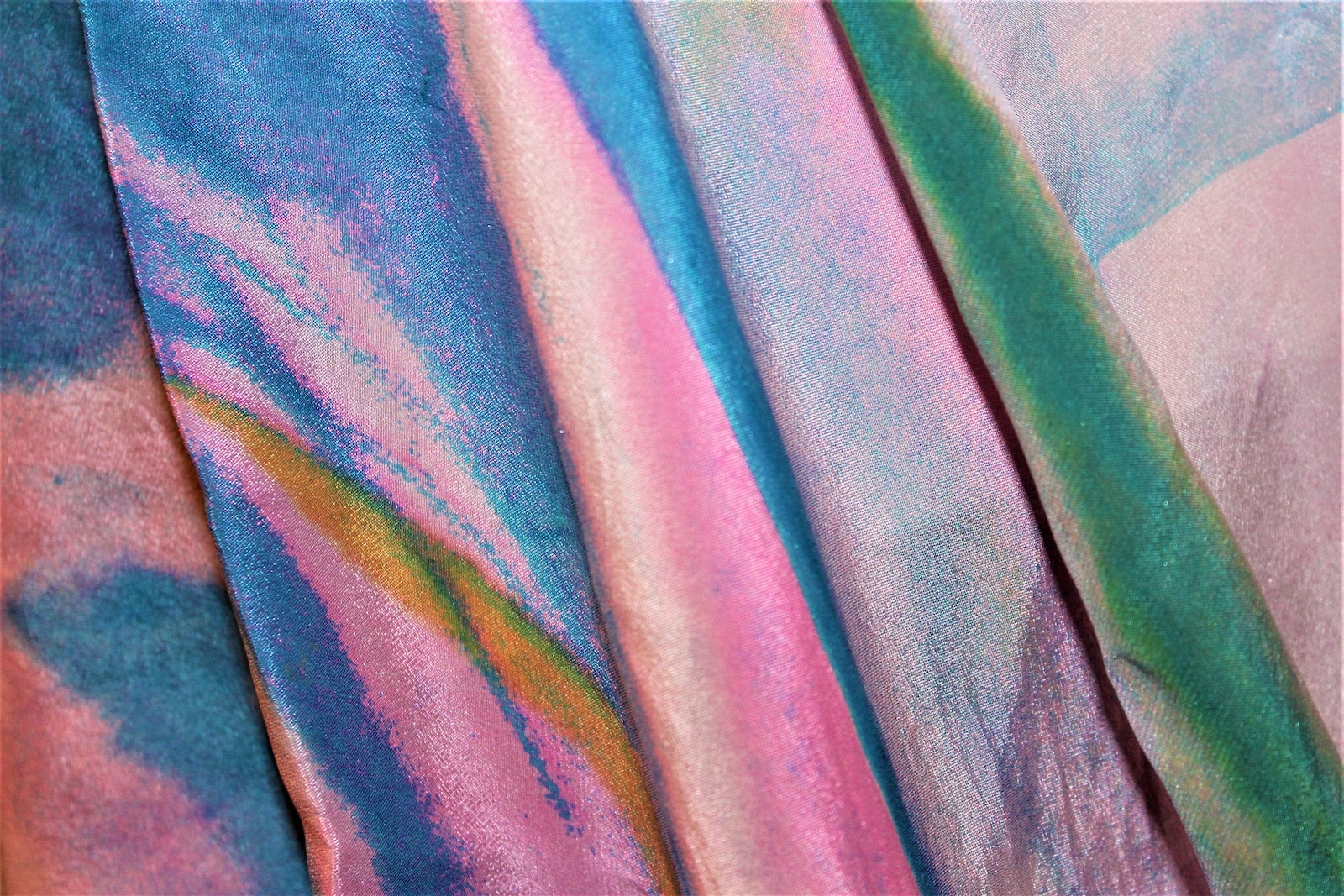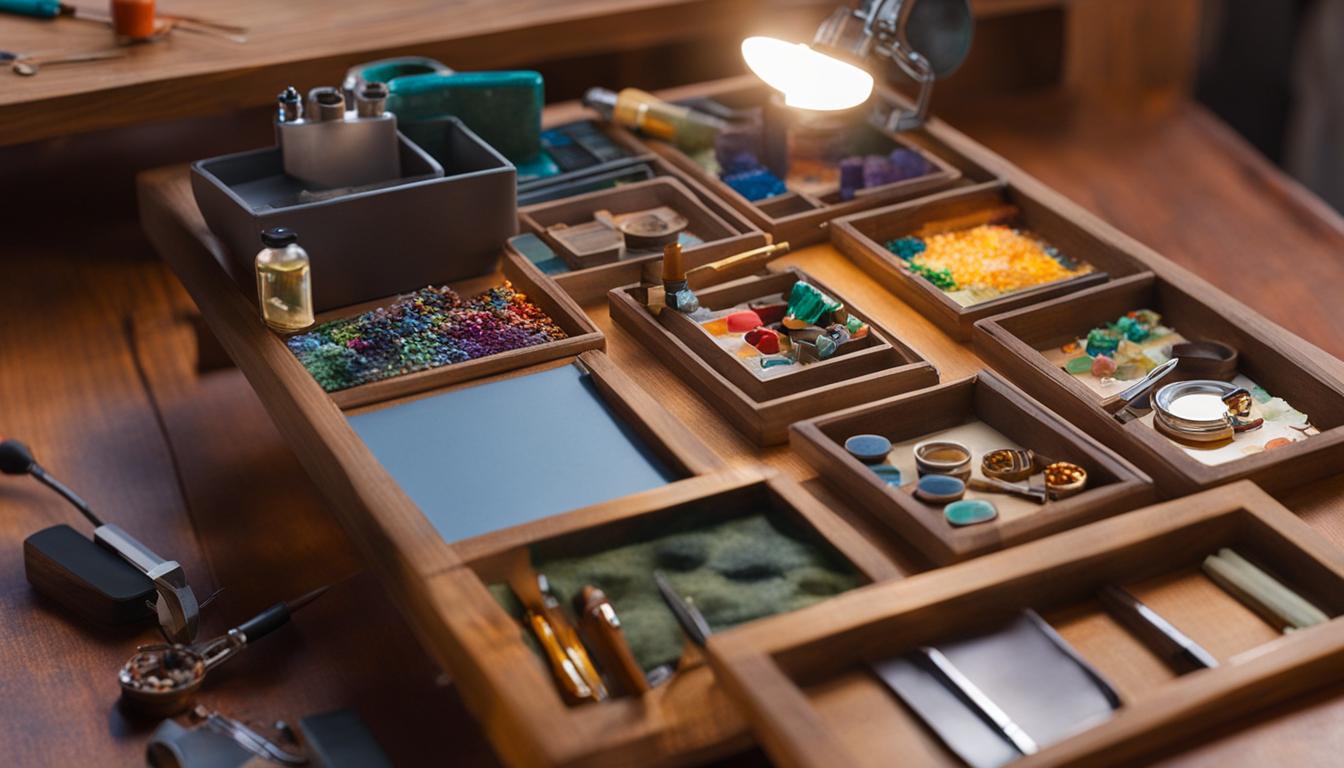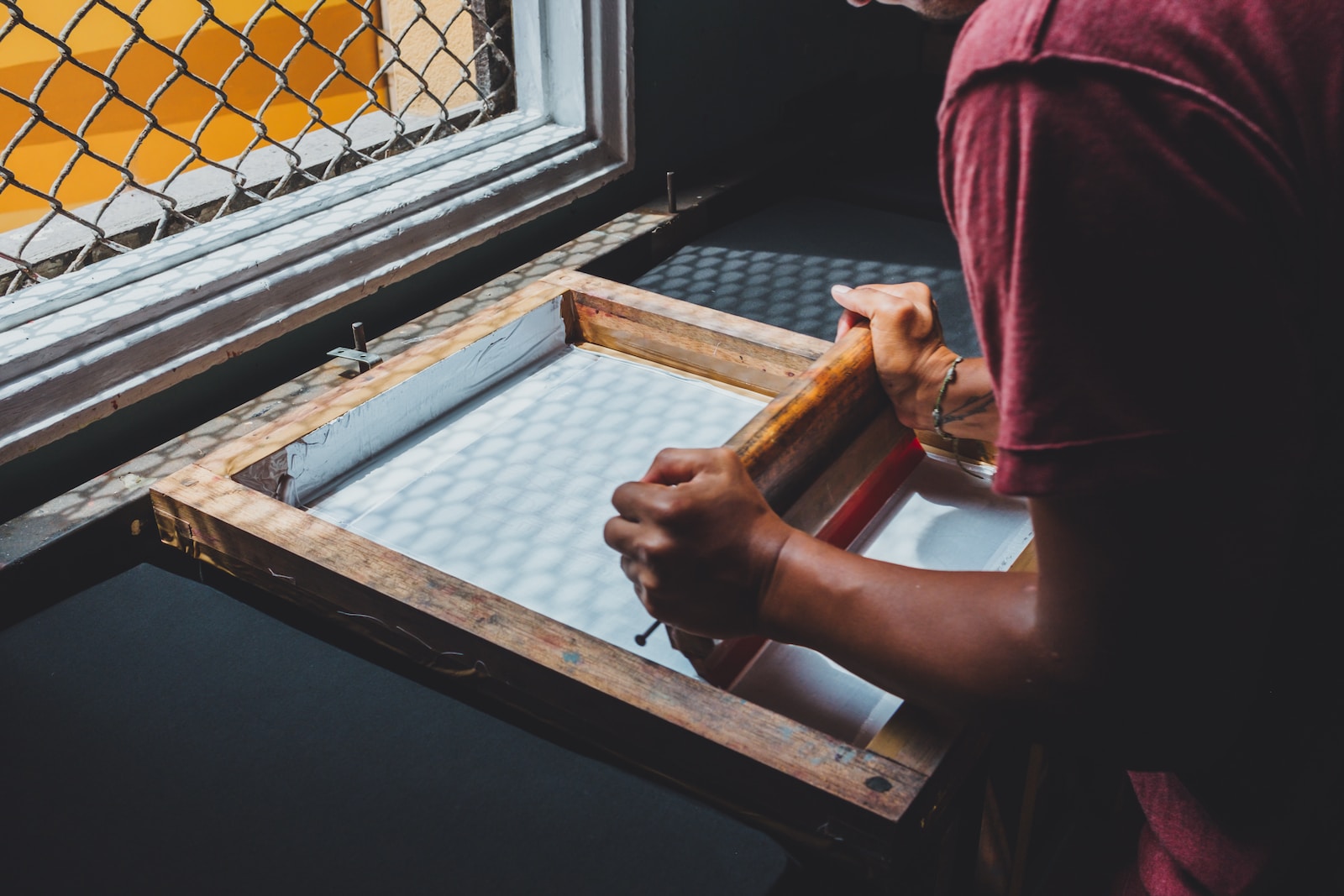Batik Fabric Art, a rich tapestry of human creativity, is an alluring artistic technique that utilizes wax or resin as resist mediums to create awe-inspiring designs on fabric. This art form has its roots deep within the cultural soil of many Eastern countries, but its enchanting charm knows no national boundaries. Its vibrant hues and intricate patterns whisper stories of ancient traditions and the skilled hands who brought them into existence.
Characterised by its unique method of dye-resist, Batik stands as a testament to the beauty that lies within detailed craftsmanship. Each creation is an expedition through layers of color, where wax or resin acts as resistant barriers, creating multi-faceted landscapes on cloth canvases.
A Quick Journey Through the History of Batik
The origins of Batik fabric art can be traced back centuries ago to ancient Egypt and Middle East from where it gradually spread to Asia—particularly Indonesia—primarily due to trade routes. The term ‘Batik’ itself derives from the Javanese word ‘ambatik,’ meaning ‘a dotted cloth.’ Historical evidence shows batiks being produced in Java for Sultan’s courts in Yogyakarta and Surakarta around 1800s.
This exotic art form continued to evolve over time with cultural exchanges and developing technologies modifying its traditional techniques. While initially created using simple tools like bamboo spouts or crude copper stamps for applying wax or resin onto fabric; today’s artists experiment with brushes, stencils, even tjanting (a Javanese tool) for more intricate design application.
The Importance and Cultural Significance: More Than Just Cloth
Batik fabric art holds profound cultural significance in places where it flourished—like Indonesia, Malaysia, India; each region developing their own distinctive style reflecting local beliefs and customs. In Indonesia – recognised by UNESCO as the Masterpiece of Oral and Intangible Heritage – batiks play substantial roles at ceremonies marking milestones like birth or death. They are not merely seen as pieces of decorated cloth but are often imbued with symbolic meanings; motifs usually representing elements from nature such as plants or animals indicate prosperity while some geometric ones ward off evil spirits.
Indeed, this elevated status transforms batiks into vessels carrying ancestral wisdom across generations. In a global context too, Batik has left indelible impressions within the realm of international fashion trends; these stunning handcrafted designs have found way onto ramp walks flaunting their timeless appeal amidst fast-changing fashion trends.
Wax: The Time-Honored Tradition
When we talk about wax, we’re referring to a broad category of compounds that are malleable at ambient temperature and typically consist of long-chain hydrocarbons. Understanding the role of wax in fabric art, particularly Batik, necessitates diving into its unique qualities.
Wax is primarily used as a resist – it resists dye from penetrating areas of fabric where it has been applied, thus creating patterns. In the realm of Batik fabric art, there are two kings in the wax kingdom: paraffin and beeswax.
Beeswax is loved for its higher melting point and flexibility while paraffin is favored for sharp crackling effects due to its brittle nature. Quite often, these two waxes are merged together in varying proportions to reconcile their differing traits and optimize their characteristics.
Unlocking the Magic with Wax
Batik artists plunge their canting (a traditional tool for applying wax) into molten wax and skillfully administer it on sections they wish to remain undyed. As the cloth is subsequently dunked into a dye bath, the waxed areas valiantly resist color penetration. The process can be repeated with different dyes for complex multi-colored designs.
When all desired layers have been applied, the final act involves removing the protective layer of hardened wax by ironing between absorbent papers or boiling out – revealing an intricate tapestry woven in vibrant hues. The versatility of this technique lends itself beautifully to both simplified motifs as well as more complex designs requiring precise detailing – truly showcasing how essential wax is within Batik’s artistic expression.
Resin: A Modern Player on an Ancient Field
Moving over to resin – an organic substance secreted by certain plants that hardens upon exposure to air – this too plays a key role in Batik artistry but offers slightly different pros and cons when compared with our old pal Wax. Rosin (processed pine resin) is most commonly utilised within batik work due to its optimal consistency once melted down. The evolution of Batik saw innovative artists dabbling with resin or even synthetic resins such as Parez 707 – a product designed specifically for batik practices which results in a consistent quality unlike natural products whose properties can vary.
Resilient Resin Reveals Radiant Results
The way resin works within batiks mirrors that of wax quite closely – acting as a resist that prevents dye from permeating certain sections of fabric. Yet there are notable differences; those who lean towards using resin proclaim it gives finer lines allowing more detailed work and less propensity towards cracking – leading to fewer characteristic “crackles” unless deliberately made so. This being said, there remains ongoing debate among purists who argue against straying from traditional beeswax mixtures whilst others embrace the change and enjoy pushing boundaries within this age-old practice – an interesting conundrum revealing how diverse views coexist even within niches such as Batik!</p
The Great Divide: Wax vs Resin, the Batik Art Balancing Act
When you think of a seesaw, it’s about balance and both wax and resin play crucial roles in Batik fabric art that can be likened to this equilibrium. Wax has been a traditional stalwart in batik from its inception. It acts as a resistant agent against the dye penetration into the fabric, thus creating intricate designs with crisp lines and contours.
On the other hand, resin has emerged as an impressive contender offering different results on various fabrics. The functionality differences between wax and resin are substantial.
Wax is malleable and easy to apply even at room temperature with tools such as tjanting or brushes. It cracks during the dying process creating distinct lines commonly referred to as ‘crackling effect’, unique to Batik art.
Resin, however, doesn’t crack like wax does such that you could obtain smoother designs with it. Resin tenders more flexibility; it doesn’t need heat to become usable and gives artists greater control over their designs.
Unmasking Wax: The Beauty & The Beast of Batik
Diving into wax’s pros reveals why it is a favorite for many artists – its ability to create unique textures sets it apart in batik works of art. The texture resulting from using wax varies depending on whether the wax was hot or cool when applied. Additionally, when used correctly, wax offers bold colors due to its efficient resistance against dyes.
However, working with wax comes with several challenges too – hence ‘The Beast’. Firstly handling hot liquid can be hazardous if not done carefully; secondly removing all residual wax after dyeing could be tedious since it involves either boiling or scraping off which may damage delicate fabrics.
Riding The Resin Wave: A Sea of Possibilities & Pitfalls
Resin brings forth new prospects in batik artistry; not only does it offer smooth design executions but also impressive durability compared to its counterpart – particularly important for wearable batiks or those exposed regularly to sunlight inside homes since they resist fading longer than their counterparts created using traditional waxes. In spite of these advantages that make resin seem like an artist’s dream come true – there are downfalls too!
First off would be cost – good quality resins might break your bank compared with affordable paraffin or beeswax options available for traditionalists out there! Furthermore unlike malleable waxes that can be remelted repeatedly if mistakes were made during application process – once set resins are nearly impossible correct without causing significant damage final product!
Delving Deeper: Rarely Known Details about Wax and Resin in Batik Art
The Thermal Tango: How Temperature Influences Wax and Resin
Temperature plays an integral role in the application of wax or resin in batik art. The primary concern here is the ‘melting point’ of both materials. Wax typically has a lower melting point compared to resin, meaning it liquifies faster upon heating.
This molten state allows for easier spreading on fabric, but also demands careful heat management to prevent unwanted “bleeding” of the wax into other areas. Resin, on the other hand, possesses a higher melting point.
This leads to a more controlled spread when creating intricate designs due to its slower melting and cooling rate. However, resin’s higher temperature requirement may pose risks like fabric damage if not monitored cautiously.
A Colorful Affair: Dyes, Fabrics and Their Interplay with Wax or Resin
An interesting facet of batik art is how dyes interact differently with wax or resin treated fabrics. In essence, both materials act as resist substances – creating un-dyed areas by preventing color absorption where applied. Yet their interaction with dyes yields distinct outcomes.
For instance, when dye is applied on a wax-treated area, cracks often form in the dried wax leading to what’s uniquely known as ‘batik cracking’. This gives rise to fine lines of color seeping through these chinks into the undyed sections creating an appealing veined effect.
Resin use results in cleaner lines due to its flexible nature resisting crack formation when subjected to dyeing process. The final artwork then tends towards sharper contrast between dyed and undyed sections without ‘cracked’ details typical for wax-based batik.
Mastery Unveiled: Secrets for Stunning Results Using Wax and Resin
Unleashing breathtaking beauty from these humble materials needs more than just knowledge – it calls for mastery that only comes with practice. A pivotal secret lies in understanding your chosen material’s temperament under different conditions – this sets apart good batik artists from truly great ones! When working with wax, consistent temperature control for maintaining its liquid consistency is paramount.
Too hot can result in unwanted bleeding and too cold can make it unspreadable! Skillful manipulation around these thresholds holds key power over your artwork’s final look.
With resin’s sturdier nature comes a different set of considerations – mainly ensuring even heat distribution during melting without scorching your fabric! Also mastering removal techniques like boiling or dry cleaning without jeopardizing your design integrity significantly impacts overall success while working with resin.
Mastering the Art: Advanced Techniques & Tips for Using Wax and Resin
Diving into the world of Batik art can be as exhilarating as it is complex. Understanding the use of wax and resin and their respective roles in creating vibrant, nuanced designs are key to mastering this intricate art form.
Both materials have their unique attributes which aid in delivering different aesthetic results. Our journey begins with the identification of these characteristics and how they can be manipulated to serve your artistic vision.
The Right Tool for the Job: Deciding Between Wax or Resin
Choosing between wax or resin lies heavily on the complexity of your design. If you’re aiming for a crisper, more defined line work, wax would be your best friend.
Its inherent nature allows it to resist seeping into the fabric, maintaining clear and distinct lines that define your design. Resin on the other hand is perfect for designs that embrace fluidity and softer edges.
It tends to seep slightly into the fabric allowing a spread of color that’s less controlled but beautifully organic. Ideal for abstract designs or where blending colors play a pivotal role.
Manipulating Perceptions: Achieving Different Effects with Wax & Resin
The variable yet controlled permeability of wax can be used to achieve an array of effects in Batik art. To obtain a crackle effect, one could simply apply wax on dry cloth then crumple it before dyeing. The resultant masterpiece will boast an intriguing series of fine lines that resemble shattered glass – truly mesmerizing!
To instill an aura into your creation through soft blends reminiscent of watercolor paintings, look no further than resin! By carefully controlling its application onto wet cloth before dyeing you can evoke amazing gradients rarely seen outside traditional painting mediums.
No More Sticky Situations: Handling Common Challenges with Wax & Resin
The most common challenge when working with wax is its propensity to create unintended blotches if not properly applied or removed after dyeing, thus ruining hours spent meticulously designing patterns. One way around this is practicing patience – applying thin layers and giving enough time for each layer to dry fully before removing it.
As captivating as resin’s fluidity may be, it also poses challenges especially regarding control over color spread during dyeing process. To mitigate this issue, artists could experiment with varying drying times post-resin application prior to dyeing; shorter drying times yield wider spreads while longer ones restrict movement resulting in more controlled gradations.
Wrapping Up the Splendid Journey: Wax and Resin in Batik Fabric Art
As we sauntered together through the world of Batik fabric art, we’ve seen how wax and resin, despite being different materials, intertwine in a harmonic dance on the canvas of fabric. Each with their unique attributes and characteristics offer Batik artists an exciting palette to weave life into their creations.
The choice between using wax or resin is indeed a critical factor that can bring about significant changes in the look, feel, and longevity of your Batik artwork. However, it’s important to remember that neither one is superior over the other; both have their place in this art form depending on your desired outcome.
Every End Is but a New Beginning
Though we’ve reached the end of our discussion focused around wax and resin in Batik Fabric Art today, it’s merely a pause on this creative journey. There are multitudes of techniques still left to explore—each promising greater depth to your understanding and honing your artistic skills.
Furthermore, knowing these details should empower you as you dive further into the realm of batiking. The exploration doesn’t have to end here; there’s always another layer to uncover or another technique to perfect.
Remember: true mastery comes from constantly seeking knowledge. To draw our artistic adventure today to a close – whether you choose wax or resin for your next project , remember it’s not just about making marks on fabric but creating expressions from your soul that speak volumes without uttering a word.
So go forth bravely onto your canvas with either wax or resin as your weapon of choice – let every stroke tell a story! And so ends our exploration for today; but who knows what marvelous discoveries await us around the corner?
As they say in art —the only constant is change itself! Here’s hoping this article has ignited an insatiable curiosity within you toward this captivating form of textile artistry known as batiking.
 Skip to main content
Skip to main content


